Dr Magnus Johnson, Senior Lecturer in Environmental Marine Science, University of Hull
Like much of industrial landscape around the Humber, Spurn Point is a palimpsest of what deepsea biologists refer to as lebenspuren (animal traces) except that what we see on Spurn are traces of human activity.
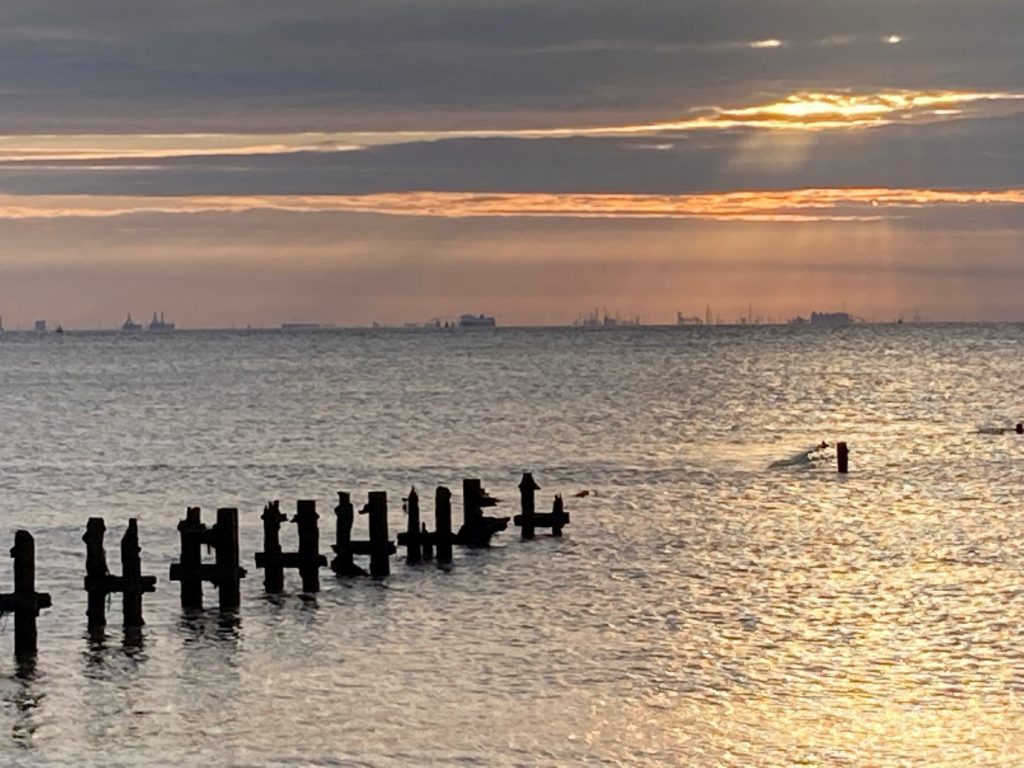
Remnants of a pier on the inner shore of Spurn Point (Photo Magnus Johnson)
What we see on Spurn Point now is a remnant of a once thriving community, including a railway line that ran from the town of Kilnsea at the top of the point, three pubs, ABP offices and lookout point, one of the only residential lifeboat stations in the UK, a University of Hull field station and two lighthouses. It is not alone in its deterioration, more than 30 settlements along the Holderness coast have been lost due to coastal erosion since the 19th Century. Now the Ocellarum Promentorium, as the Romans apparently called it, has been all but separated from the mainland by the 2013 storm that washed away the road and left a 150m gap.
Today, the UK’s newest island is a site of special scientific interest (SSSI), owned and managed by Yorkshire Wildlife Trust (YWT), as a multi-faceted reserve including natural history and active scientific research. It is also a historical site incorporating the now disused light houses and the Spurn Point Battery that was constructed to defend the Humber before the 1st World war. I visited the bunkers on Spurn with Andy Mason the YWT Spurn Heritage Officer, Unimog Driver, historian, safari leader and general Spurn enthusiast. It was almost reassuring to see that the graffiti on the walls of the barrack rooms from the early to mid-1900s was just as lewd as one would expect from some contemporary teenagers!
Even with the rise in prominence of wildlife on Spurn the military theme is retained by the military type vehicle (the “Unimog”) that is used by the Wildlife Trust to carry visitors across on Safari. The area around Spurn Point is of huge interest to ornithologists, as the estuary shelters many waders who feed on the invertebrates in the mudflats and acts as a stopping off point for migrant species flying along the east coast of England. At certain times of year, the area is full of middle aged (usually) gentlemen with high power binoculars and unfeasibly large camera lenses hunting down rare species of bird resting in the bushes near Kilnsea and along the point itself.

Yorkshire Wildlife Trust Volunteers with the Unimog that takes people back and fore to the point on safari or to help with conservation efforts (https://www.ywt.org.uk/spurn)
The future of Spurn Point may be as a tool in the new planetary war against climate change. The Humber was at one time a dominant source of oysters. Old shells, remnants of once prolific reefs are often encountered around its shores. The shallow sloping sandy-muddy substrate that is a feature of the inner shore of Spurn Point is home to a range of fish and invertebrates that inhabit soft sediment estuarine environments and could be an ideal habitat for the re-establishment of seagrass.
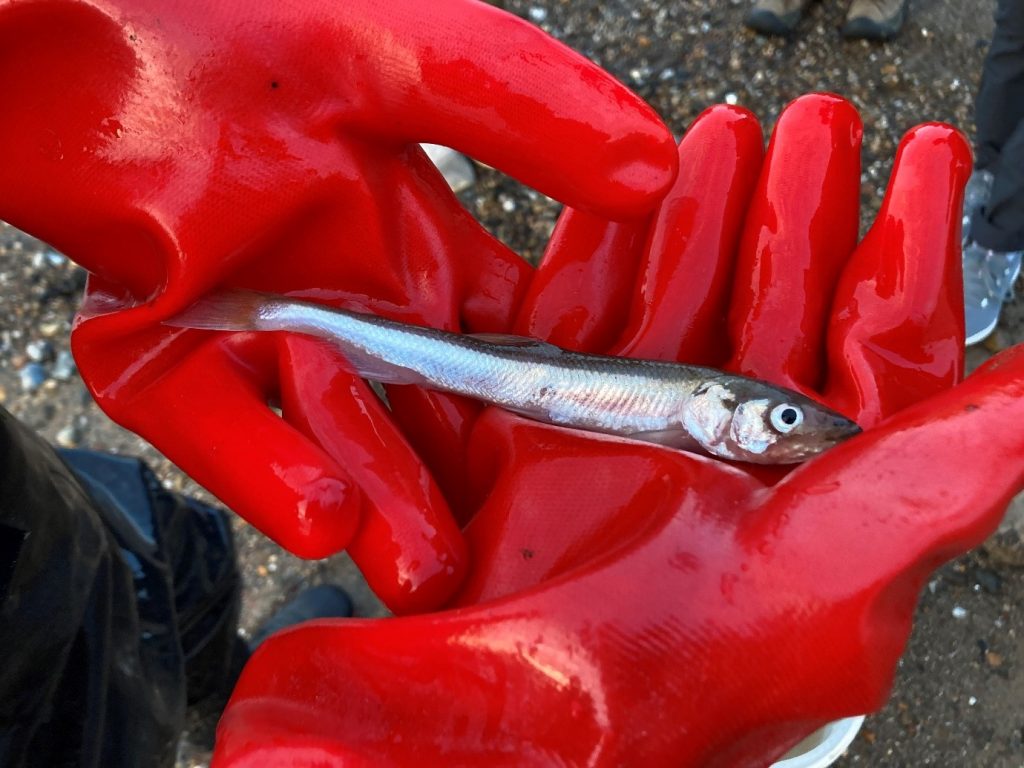
Smelt – commonly encountered in the intertidal zone on the inner shore of Spurn. Uniquely, this species smells of cucumber (Photo Magnus Johnson)
Working with Dr James Wood, my partner in crime based at YWT, we proposed and got funding for the development of a native oyster facility on Spurn in 2019. This involved transplanting 3000 adult oysters from the beautiful, pristine, clear waters of Loch Ryan on the West Coast of Scotland to the Humber. The facility aimed to establish the viability of oyster mariculture on Spurn Point and offer a training facility for volunteers, university students and fishers. We were told by estuarine academics that oysters would not grow in the Humber because of the high particle loads in the water. We were told by successful oyster farmers that native oysters do not like living in the intertidal. It turns out they were wrong – the oysters in the Humber are doing really well and this year we have seen oyster spat on the shells of our adult oysters.
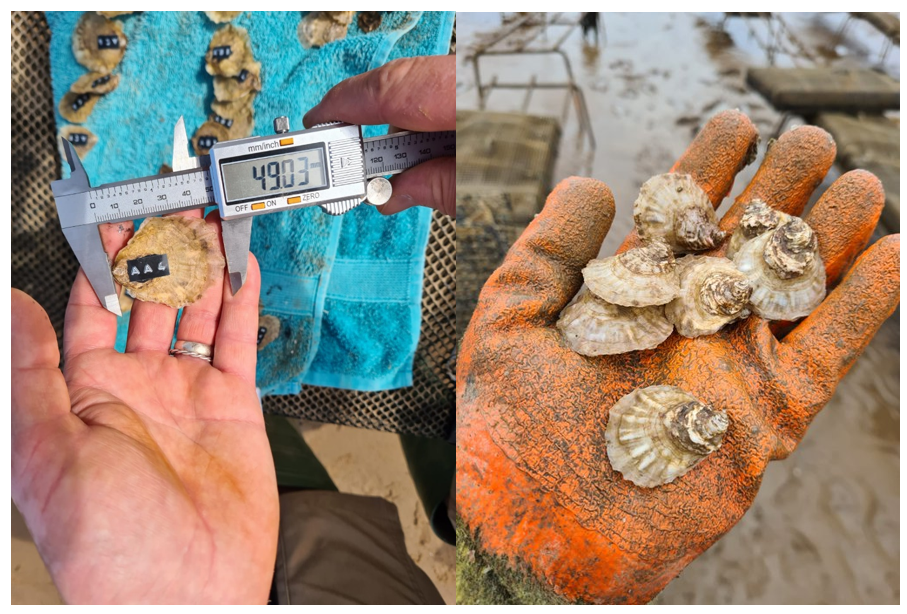
Two year old native oysters from Spurn Point showing summer growth (Photo James Wood)
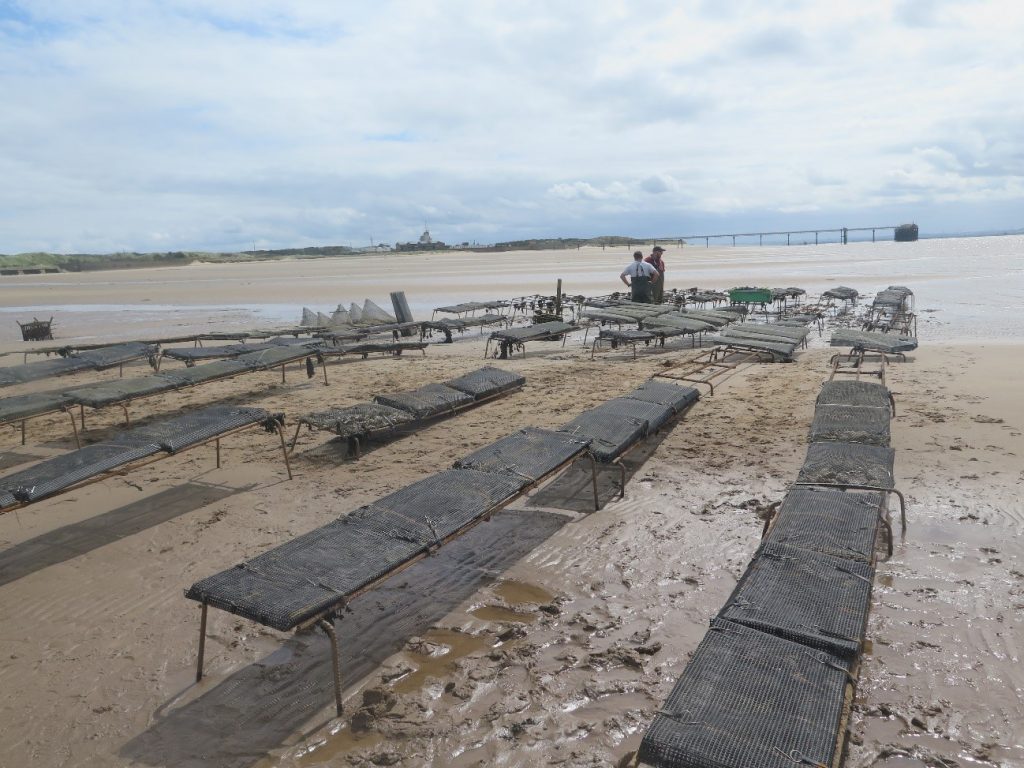
Bags of oysters on trestles in the intertidal zone at the Humber Aquaculture facility on Spurn Point (Photo Magnus Johnson)
In the right conditions, both oysters and seagrass can capture carbon and trap it in themselves or in the sediment around them. A single oyster can filter 240 litres of water a day, removing microscopic fauna, flora, sediment and nitrates from the water column. In other estuaries this cleaning effect is thought to enhance the survival of plants that prefer clear water. In addition, by adding complexity of an otherwise fairly simple surface habitat, they can encourage the settlement of a diverse array of species that can in turn act as food for endangered migratory birds and estuarine fish.
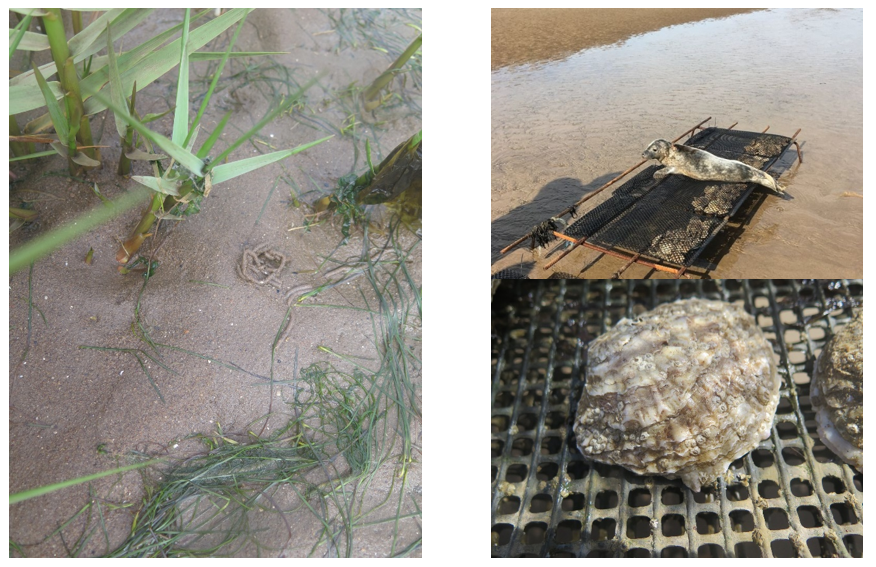
Chordgrass (Spartina) and Seagrass )Zostera). A young seal resting on an intertidal oyster trestle on Spurn Point. An adult native oyster covered in newly settled barnacles (Photos Magnus Johnson and James Wood)
We envisage Spurn Point in the future once again having a thriving community but this time a biodiverse intertidal one with healthy oyster reefs and seagrass meadows that in turn attract a myriad of other species. Current research in this collaboration involves looking at current levels of infaunal biodiversity, assessing how much carbon might be sequestered by oysters and seagrass and developing a viable system for replanting seagrass meadows.
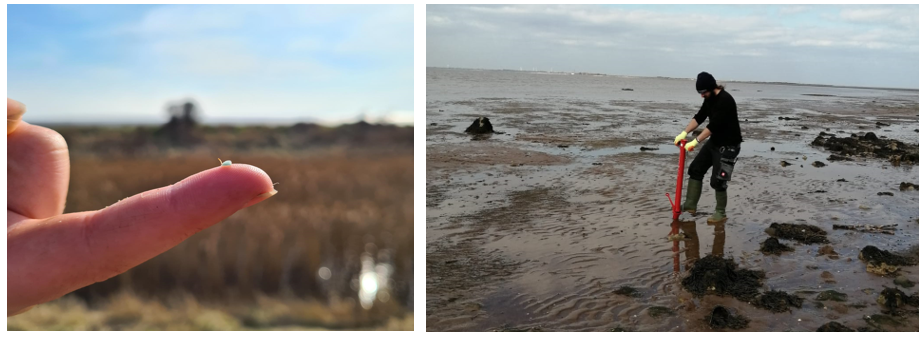
Seagrass seedling that has been cultured from the previous year and Andrew Jayes using a “Pottiputki” to re-establish seagrass on the Spurn shore (Photos: YWT)
We are also working towards the re-establishment of a residential field station, so that the next generation of conservationists, environmental scientists and marine ecologists can come and learn, in the field, about the importance of intertidal estuarine environments and just enjoy this blustery wilderness and fascinating historical site on the city of Hull’s doorstep.
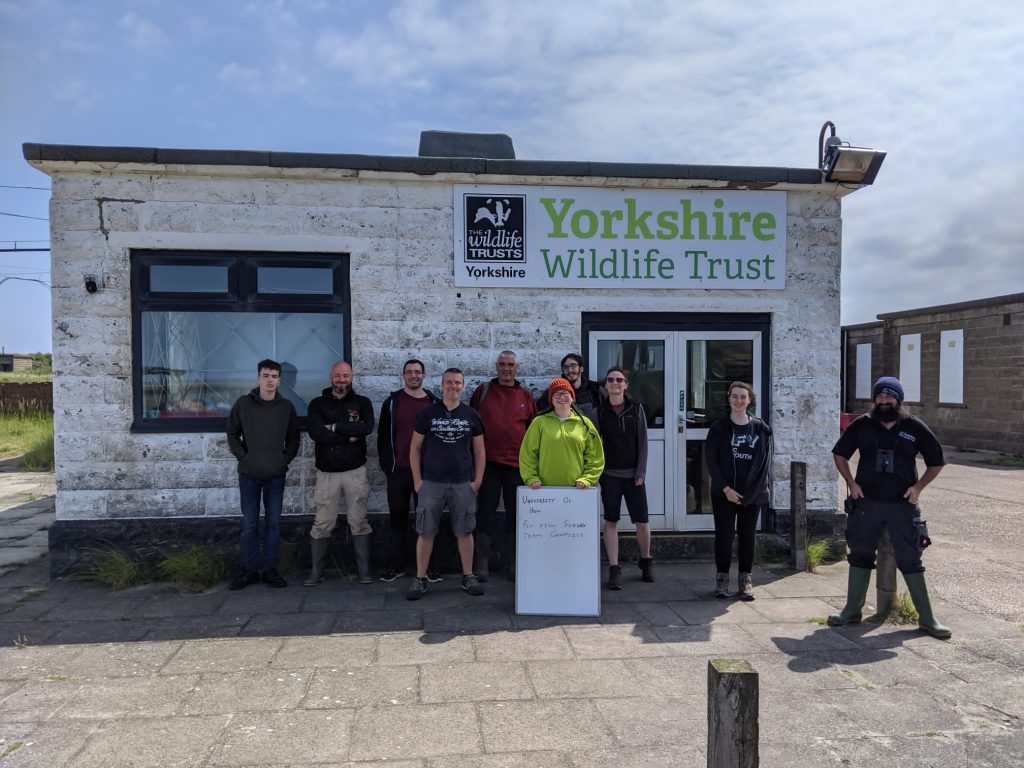
University of Hull and YWT staff and students with site seagrass/oyster lead and Hull University research student Andrew Jayes (on the right) after a weekend assisting with conservation efforts on Spurn Point (Photo Adam Stoyle)
If you are interested in finding out more about the work on Spurn or supporting it in any way, please contact Magnus via m.johnson@hull.ac.uk
